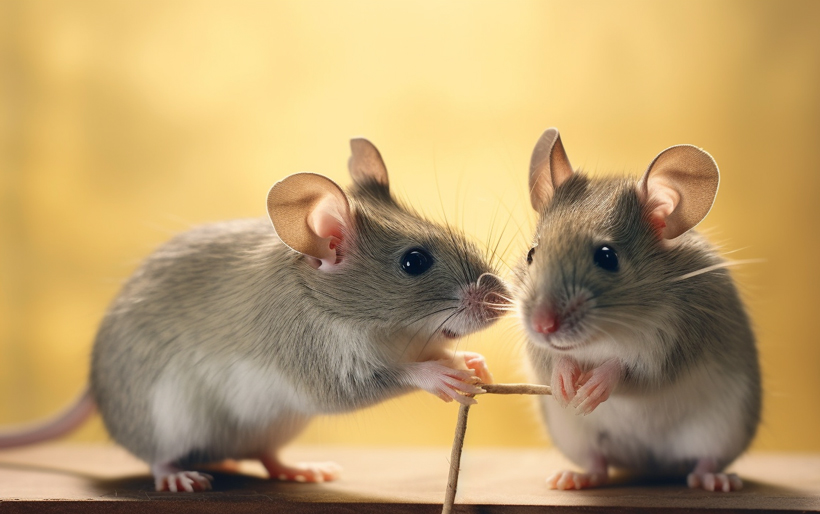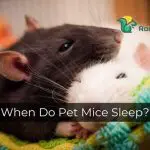Do Mice Know When One is Missing? How Will They Act?
While some mice are solitary, some prefer living in groups, referred to as a nest of mice. They can live in up to two dozen mice in these nests on a hierarchy with an alpha male. Usually, these groups consist of a family and engage in various social activities together.
But do mice know when one is missing? Although there is limited evidence to support it, mice have been observed to experience distress when some of their group members are missing. If you take away some pet mice from a group, the remaining mice may display changes in behavior for some time.
Now, whether you’re interested in pet ownership or pest control, this article can provide you with helpful information. So, read on to learn more.
Do Mice Know When One is Missing?
While no solid proof exists that mice know when one is missing from the group, various owners have observed a reaction in this situation. When one member of a mice’s group is taken away, the remaining may show behaviors like stress and anxiety.

The impact on the remaining mice may vary depending on the social status of the absent mice. For instance, if the missing mouse is the mother of the young siblings in a nest, the impact is much, especially on them.
Also, the absence of the dominant mice in the group may cause high levels of distress and anxiety. Also, fights can ensue as the remaining members fight for dominance.
However, to better understand how the absence of one mouse may affect the others, you ought to learn about their social behaviors.
Overview of Social Behavior of Mice
As earlier stated, mice are social animals who live in groups or colonies in the wild. In these groups, the mice can be as many as a couple of dozen or even more. Most of the mice in the group are usually siblings since a female can give birth to over 30 pups per year.
- Males are usually the dominant ones in the groups, often referred to as alpha males.
- However, some groups also have females as the dominant mouse, especially if it is the mother and her children.
- The latest pups are usually most subservient to the older siblings and parents.

In the group, these rodents engage in various social activities together. These activities include;
- Grooming: mice in the group groom each other, a behavior called allogrooming. They groom each other using their mouths and forelegs to care for their fur and maintain hygiene.
- Playing: Mice are playful animals who enjoy playing with each other.
- Exploring: Mice are also curious animals who love exploring and discovering new things. They explore together in a group.
- Communicating: Mice have various ways of communicating, including vocalizing, which includes squeaking, chirping, and singing. They also communicate through scent marking, including urinary scent marking.
How Will Mice Act When One Is Missing?
Mice may react in various ways once they realize one of their group members is missing. Their reaction and response may include;

1. Searching
The remaining mice may begin exploring nearby areas, searching for their missing member. They may also try communicating through vocalizing as they follow the scent trails.
2. Anxiety
The remaining mice may also become anxious in the absence of one of their members. The anxiety is more likely if the missing member had a greater impact on the group, especially if it was the leader.
3. Aggression
In the cases where the dominant mouse is missing, there is likely to be aggression in the group. This aggression can be caused by the remaining members fighting to establish a new social hierarchy.
4. Stress and depression
The remaining mice are also likely to develop stress due to the aggression and anxiety within the group. Depression is also more likely since a study on chronic vicarious social defeat stress shows mice can get stressed by just seeing their fellow suffer.
5. Inactivity
The mice in the colony may also withdraw from interacting with each other and remain inactive. This case is very likely when more than one mouse is missing from the group.
How Do You Take Pet Mice from a Group Without Alarming the Rest?
Taking a pet mouse from a group can be difficult due to these pets’ social nature. Below are the steps to separate a mouse from its group and avoid stressing either party.

Step 1. Observation
The first step should be observing the pets closely to tell how significant each mouse is to the group. Also, look for the mice that are well-bonded with each other and those that are not.
Observation is crucial since you can choose the right mouse to separate based on its impact on the group. For instance, you’ll avoid separating a mother from her pups or the dominant mouse. This type of selection will ensure the remaining pets won’t be distressed much.
Step 2. Separation
Once you have decided on the pet mouse or mice to take from the group, the next step is to separate them. Separation should be gradual, and if possible, keep the mice in a separate cage beside the group.
The gradual separation will allow the group to get used to not having the other party in the cage as time goes on. Also, the pets will not get stressed since the cages are near each other. As time passes, keep placing the cages further apart to minimize communication between the two parties.
Step 3. Enrichments
As mentioned earlier, these rodents are playful and enjoy playing with each other and various toys. One way of improving the separation and avoiding stressful behavior is by providing enrichment.
New toys will ensure the pet remains occupied during and after the separation. Mice enjoy playing with tubes and tunnels, ledges, bridges, and perches. They also enjoy playing foraging games.
Step 4. Observe the Separated Pet
Observe the pet closely, especially if it’s alone, in a case where gradual separation is impossible. The new pet can quickly get stressed, which can affect their health. Studies show stressed mice can lose synapses, causing learning deficits.
Provide this pet enrichment and ensure it’s comfortable in its new cage. If the separated pet is to be relocated to a new home, advise the new owners to get another mouse soon to keep it company.
Will Trapping Mice from a Group Cause Others to Leave?
In the context of pest control, people often wonder whether mice will know their trapped members are missing, causing them to fear and leave. While mice are social and can recognize the absence of one of their members, it won’t make them go away.

However, it may mean they may become inactive for some time since the absence of their fellows will cause stress in them. This inactivity can be a disadvantage since these rodents will not interact with other traps you may have elected.
Given their high birth rate and litter size, this break can also be a time for them to reproduce and multiply. Therefore, ensure all the mice are gone once you begin trapping them.
Mice exhibit complex behaviors, including their ability to sense the absence of their peers. But while understanding their social intricacies is fascinating, it’s equally essential to grasp their place in the ecosystem. Learn more about the predators that have mice on their menu by checking out what eats mice. And if you’re looking for ways to deter these little creatures from your space, delve into the smells that mice can’t stand.FAQs
This section contains various questions frequently asked on this topic to help you understand it better.
Q1. Do Mice Mourn Their Dead?
When one of the mice dies, the remaining members of the group grieve and mourn its death. During this time, they can become withdrawn, less active, and may also become stressed.
Q2. How Long Will Mice Grieve Their Missing Member?
Owners have reported changes in the mice’s behavior to take up to a month before returning to normal. Pet mice are closely bonded with other members and grieve longer in case one member goes missing or dies.
Q3. How Long Do Mice Search a Missing Member?
The mice will likely search for their missing member for about a week. After that, the scent marking of the missing member will dry out, concluding the search.
Bottom Line
Mice are naturally social creatures that tend to live in colonies in the wild and pair when kept in captivity. When a member of their group is absent, they can sense it and often become anxious and stressed. Depending on the strength of their bond, they may also display inactivity as a form of grieving.
If you need to separate a mouse from its group, it’s important to do so gradually to avoid causing stress to the mouse or the rest of the group. Follow the steps outlined in the article to ensure a smooth transition for everyone involved.




